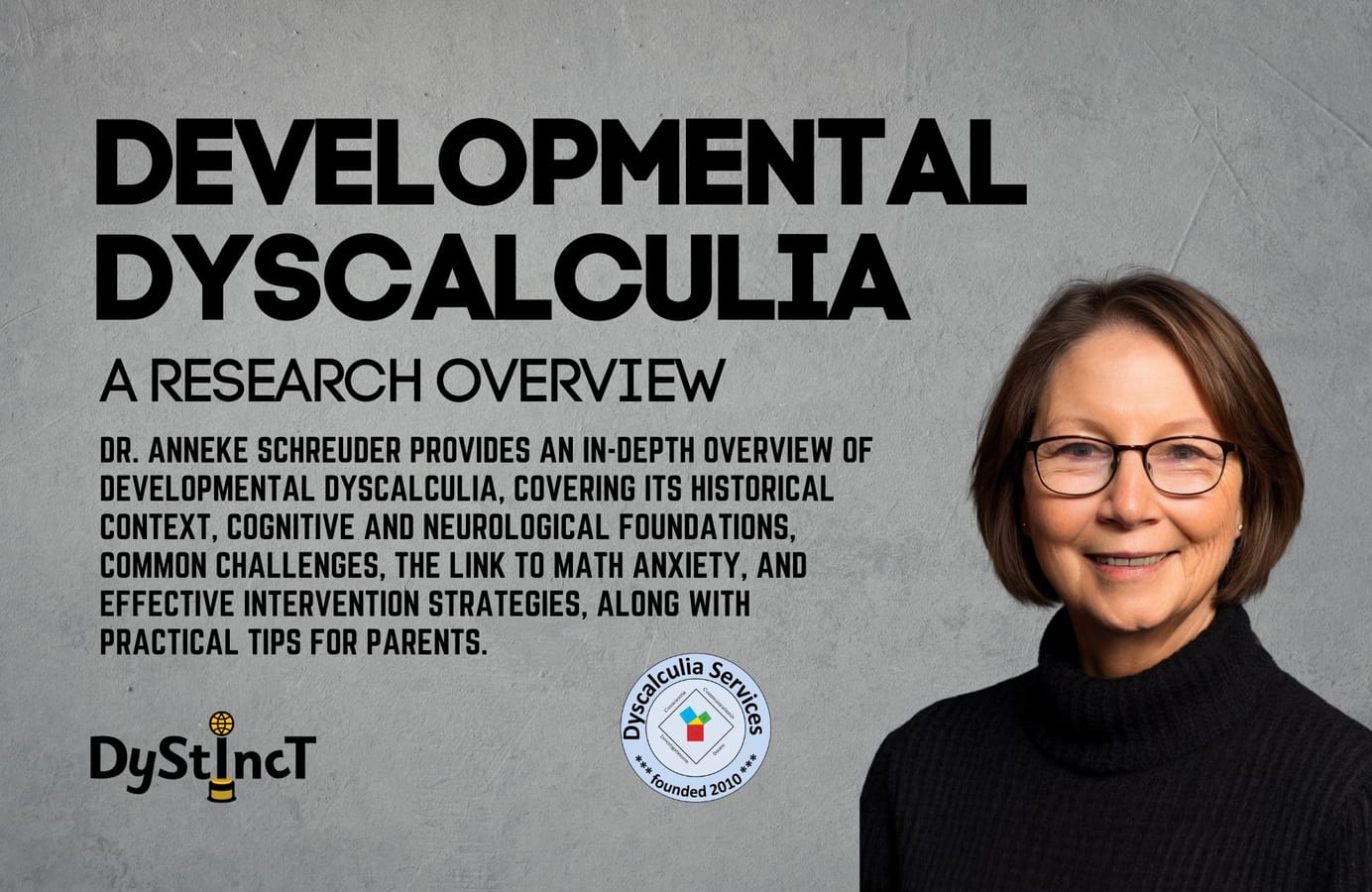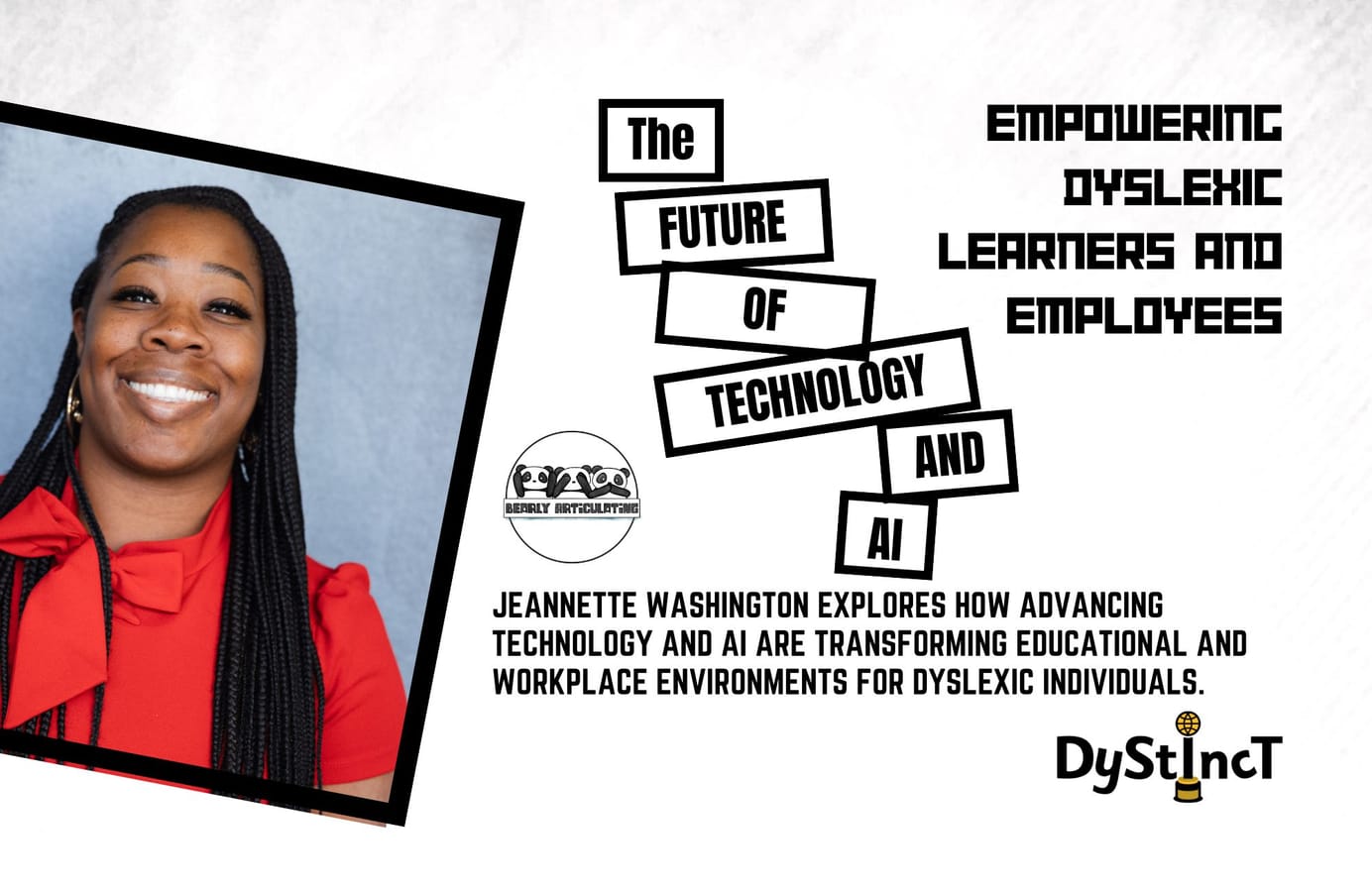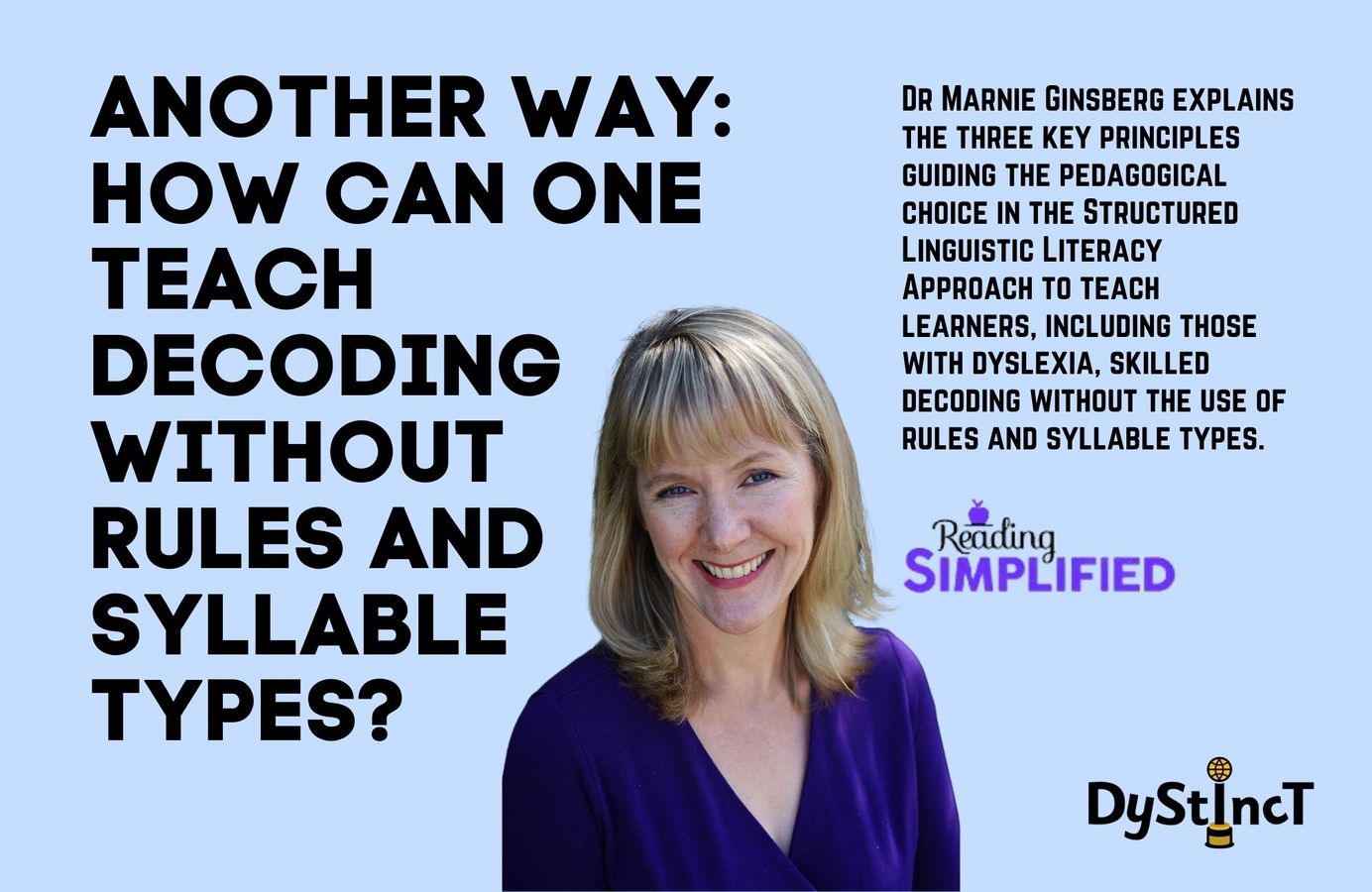
Issue 13: Another Way: How Can One Teach Decoding without Rules and Syllable Types? - Dr Marnie Ginsberg
Dr Marnie Ginsberg explains the three key principles guiding the pedagogical choice in the Structured Linguistic Literacy Approach to teach learners, including those with dyslexia, skilled decoding without the use of rules and syllable types.
Arevolution in our understanding of how we learn to read began in the 1960s and 70s, gained steam in the 80s, and was agreed upon theory by the 90s for cognitive scientists and others studying reading. Reading researchers from diverse fields propose that our visual reading system (spelling or orthography) is built on the back of our oral language system (especially meaning and phonology). Phonological processing–or the skill with the sounds (i.e., phonemes) of one's oral or written language–has been particularly singled out as a causal ability that supports or limits a child's ability to learn to decode words.
Based on the primacy of the language and phonological system, other synthetic phonics approaches have emerged, mostly since the 90s, that do not teach children many phonics rules or syllable types. [A common name has not yet been widely associated across the globe with these related approaches, so I'll adopt the newer name to refer to them: Structured Linguistic Literacy] Since many synthetic phonics approaches consider phonics rules and syllable types essential for learning how to decode, the question often arises, "How can one teach skilled decoding without rules and syllable types?" The goal of this article is to explain three key principles that enable this unexpected pedagogical choice to actually succeed in teaching learners, including those with dyslexia, how to read.
An Orientation First to the Alphabetic Principle and Sounds-First
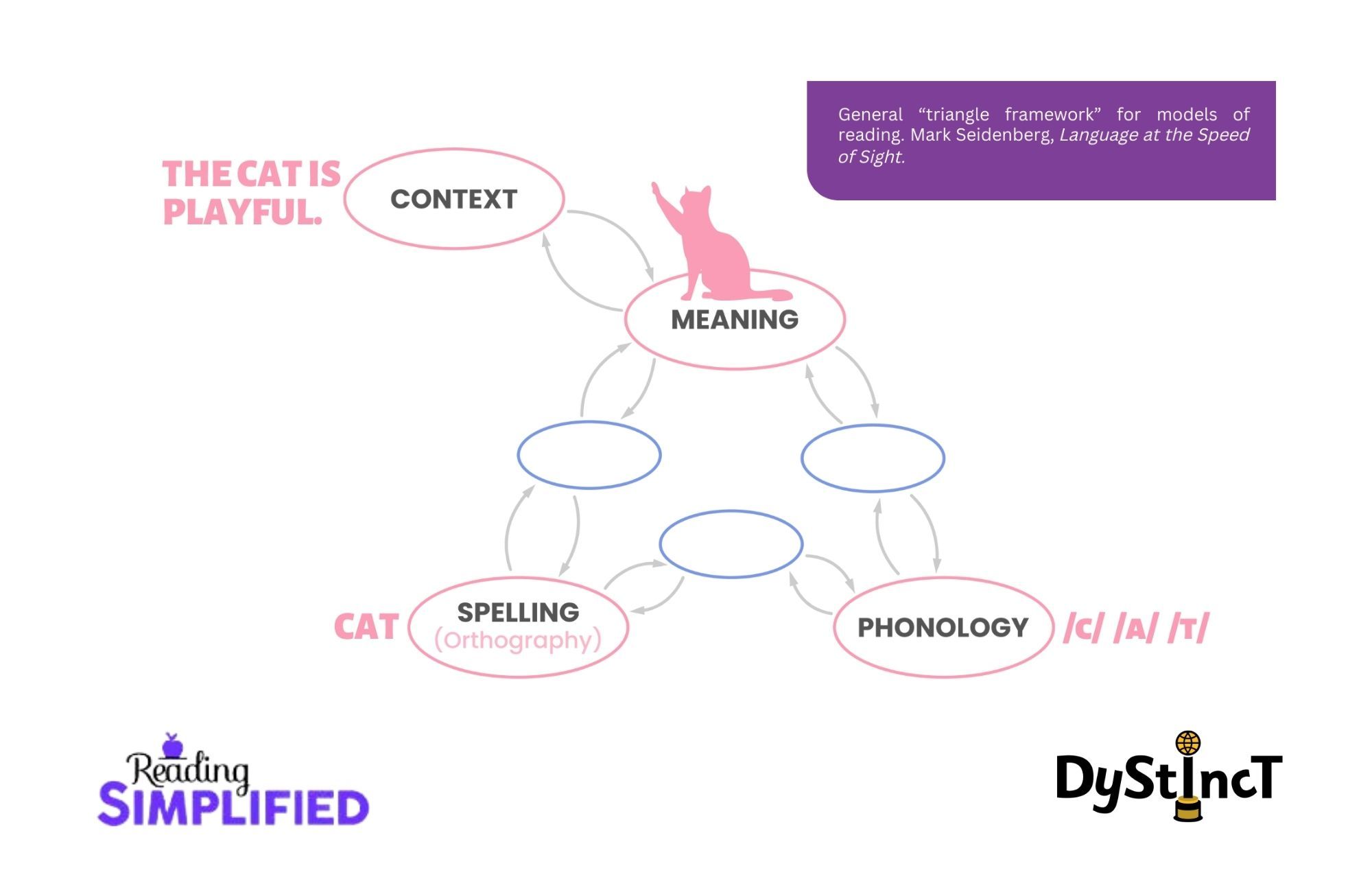
Given that the alphabetic writing system co-opts our language system in order to build the vast neural networks that allow for efficient word recognition, what if we begin our introduction to this writing system with what the child already knows – her language system? In other words, Structured Linguistic Literacy approaches start reading instruction by attending first to the meanings of words and the sounds in these words. This aligns with learning theory as Daniel Willingham writes, "We understand new things in the context of things we already know." From there, teachers aim to reveal to children the alphabetic principle–the insight that our written language is a code for sounds.
Even before the phonological awareness revolution described above, Maria Montessori had 3- and 4-year-old children at the turn of the last century begin written language instruction with this type of language-first, sounds-first orientation to reveal how our written code works:
- Children were asked to tune into "auditory" information in words they hear,
- Learn several letter sounds for consonants and short vowels, and then
- Begin spelling, or encoding, words first, as in the below image of the child in a Montessori classroom building CVC words with the so-called "movable alphabet."
That is, encoding was one of Montessori's first chosen steps to begin teaching reading. Montessori was orienting early reading instruction around the language skills children brought with them from day one.
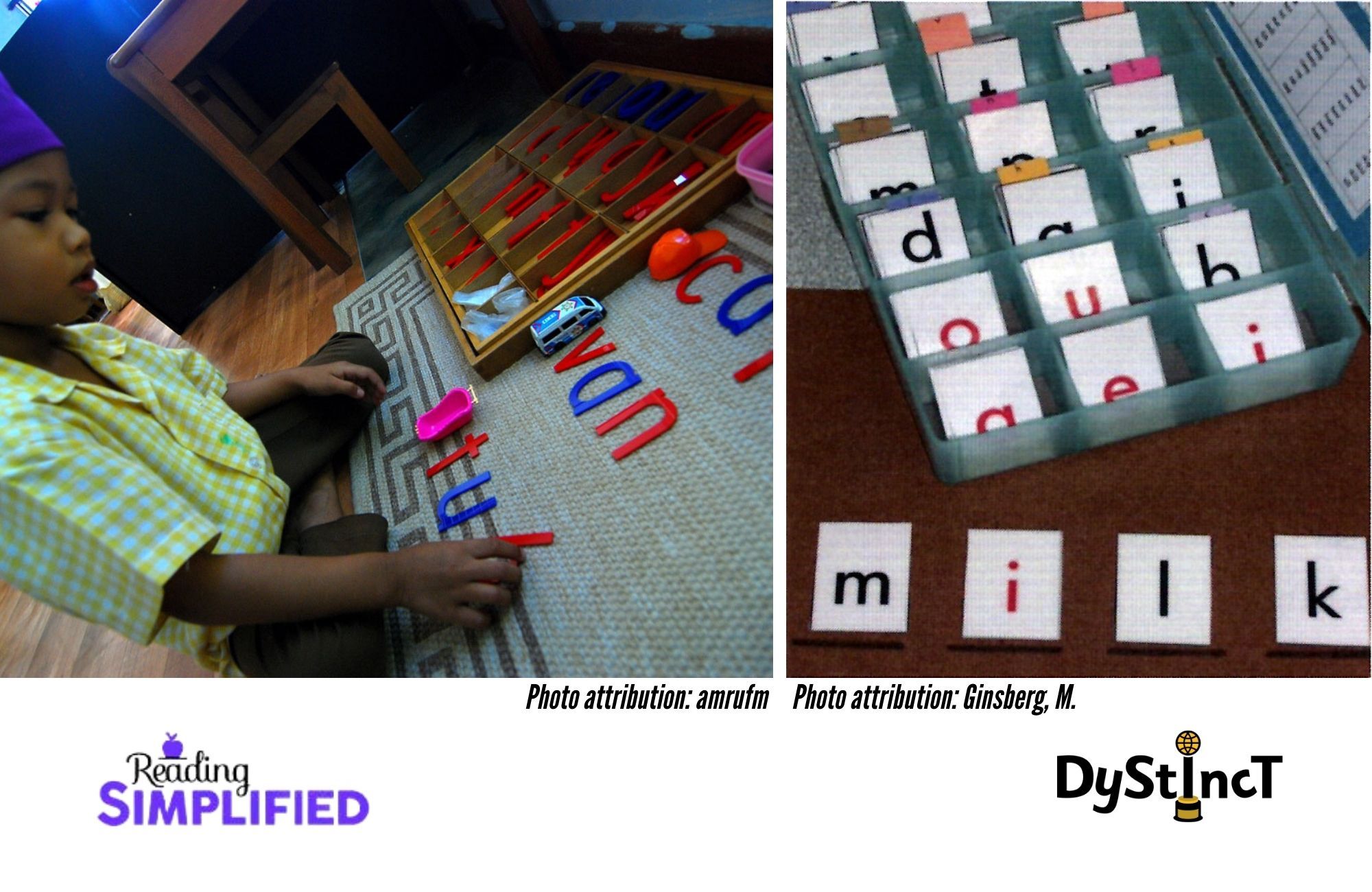
In a similar vein, the Targeted Reading Intervention, which has received over $10 million in US federal dollars for development and replication and is judged an effective intervention on the What Works Clearinghouse, had classroom teachers in low-income rural communities guide struggling K-1 readers to focus first on an activity, Segmenting Words (see adjacent image). Segmenting Words integrates the teaching of the alphabetic principle, letter-sound knowledge, and phonemic segmentation in the context of real words.
In both Montessori and Targeted Reading Intervention classrooms, notice the introductory focus on the alphabetic principle and phoneme segmentation in order to spell words. This orientation contrasts with an initial focus on letter names and/or sounds and phonological awareness as isolated activities to be learned before reading and spelling practice begin. The Structured Linguistic Literacy orientation may facilitate skilled processing of phoneme-grapheme relationships because it is built from the ground up on the foundation of the child's existing language system. Thus, the child does not have to begin with a different, mature reader's system of organization by print categories (i.e., long vowels, vowel + e, "r" controlled vowels, diphthongs, etc.). Louisa Moats alluded to this mismatch in 1998 when she wrote,
One of the most fundamental flaws found in almost all phonics programs, including traditional ones, is that they teach the code backwards. That is, they go from letter to sound instead of from sound to letter….The print to sound (conventional phonics) approach leaves gaps, invites confusion, and creates inefficiencies).
Rapid Exposure to More of the Code and How It Works
When the child has established a solid sound-based decoding approach, he is prepared to handle the next stage of learning the code. Since they organize the code by the sounds of language, many Structured Linguistic Literacy methods teach multiple spellings (i.e., o, oa, ow, oe, o_e) of one sound (i.e., the long "o") at one time, or in rapid succession.
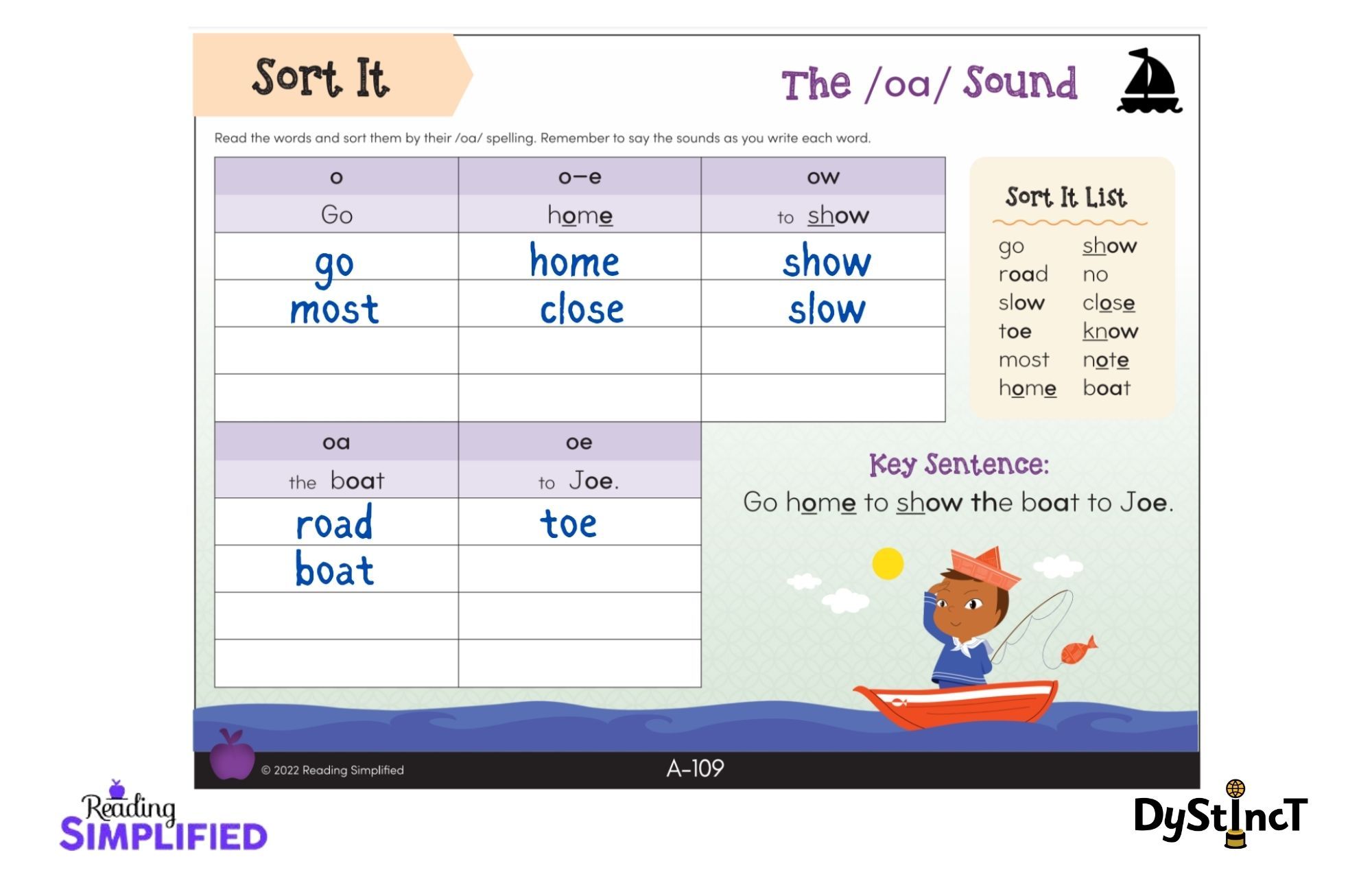
As a result, students benefit in two ways:
- They build a mental schema for how our language works early on, such as the principle that one sound can have multiple spelling representations.
- In addition, they can have exposure to more of the code. Earlier access to advanced phonics information (i.e., "ee," "igh," "ow," "er," etc.) directly allows earlier access to the top 300 most frequent words, which make up about 65% of written English.
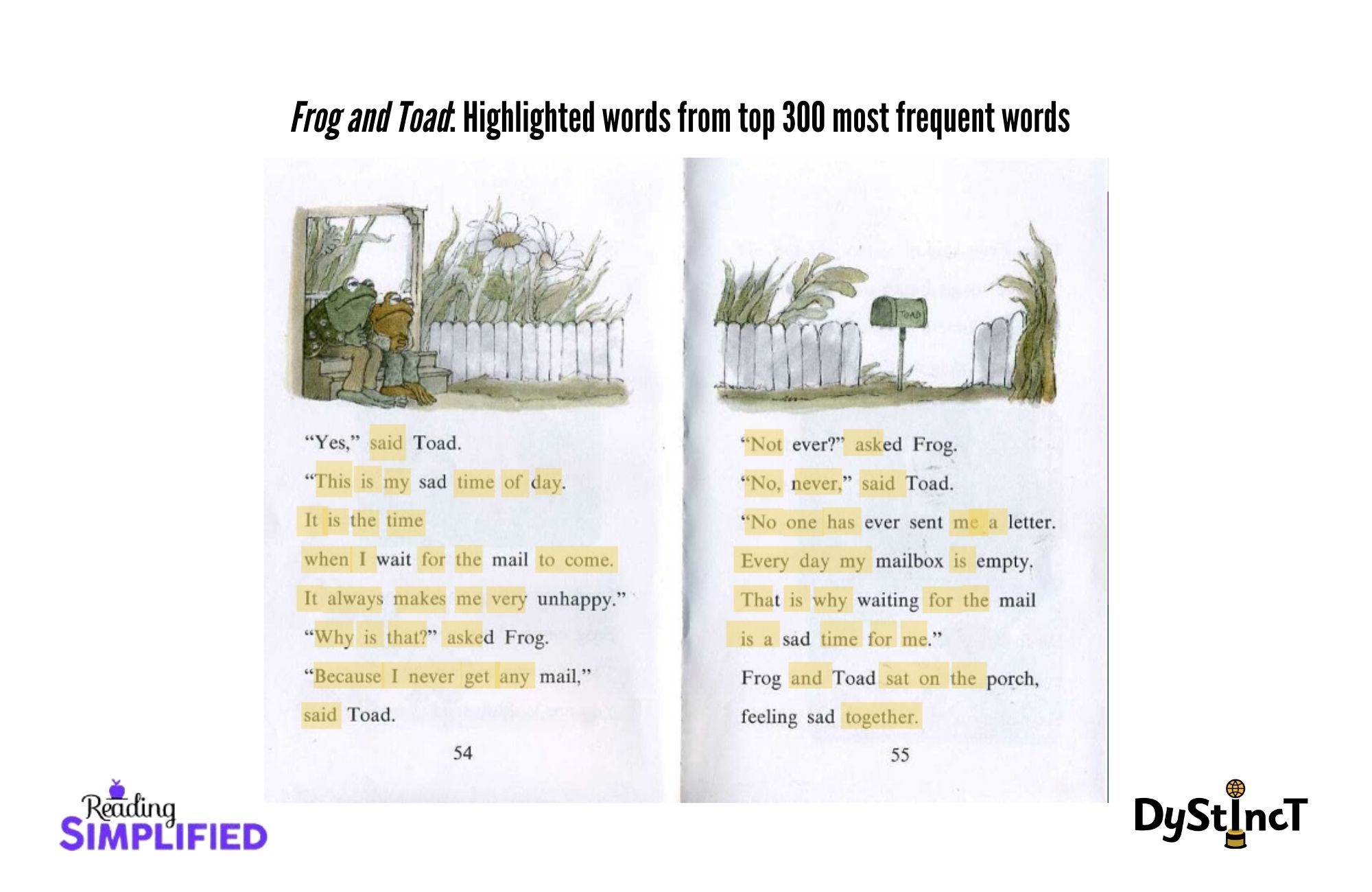
With earlier access to the high frequency words comes earlier access to transitional texts, such as Little Bear, Frog and Toad, or Messy Bessey. This milestone is about the level of the skilled first graders examined in Keith Stanovich's famous "Matthew Effects" paper from 1986. He explained that those children who get off to a good start with sound-based decoding via their developing phonemic awareness skills were more likely to end first grade reading well. They, in turn, likely read a lot because they enjoyed their success. As a result, more and more phonics knowledge and words are acquired through a positive upward cycle – the so-called "Matthew Effect" of the "rich getting richer," after a parable in the Gospel of Matthew.
Many Structured Linguistic Literacy programs, especially those inspired from the work of Diane McGuinness of Why Our Children Can't Read, strategize for this rapid acquisition of advanced phonics knowledge in order to ignite this virtuous reading cycle as early as possible. For example, in Reading Simplified we aim to leap ahead to the Advanced Phonics level (i.e., teaching long "o" and its various main spellings) as soon as the reader can decode CVC words about 70% of the time.
Cognitive Strategy Development by Focusing Only on One Language Task at a Time
The final frontier in reading development, however, still must be crossed: the dreaded multisyllable (MS) word. Structured Linguistic Literacy methods are able to prepare the developing reader to attack MS words as a result of the skills that have come before. And then we build on them.
Structured Linguistic Literacy approaches ask the learner to just do one main language task at a time: that is, attempt to de-code the written symbols into a pronounceable, meaningful word. This stands in contrast to the burden of multiple language tasks placed on readers who
- must apply a phonics rule or syllable pattern while also
- try to come up with a meaningful word that fits the letter sequence.
As with the first stage of teaching the alphabetic principle, Structured Linguistic Literacy teachers lean heavily on the language system for MS word reading. They inculcate a MS word reading habit of:
- Chunking words into parts,
- blending these chunks together,
- determining if a meaningful word has been deduced, and,
- if not, attempting another sound (usually for a vowel) to try a second attempt or another in order to settle on a meaningful word that fits the print.
Initially, teachers would scaffold this process by showing MS words separated by chunks or syllables, as in the example below from the first MS words lesson in Phono-Graphix. (Also, observe how words are chunked by phonemes (i.e., funn - y), rather than by dictionary rules (i.e., fun - ny). This is a microcosm of the distinctiveness of a language-first system versus that of a print-first, adult-oriented system.)
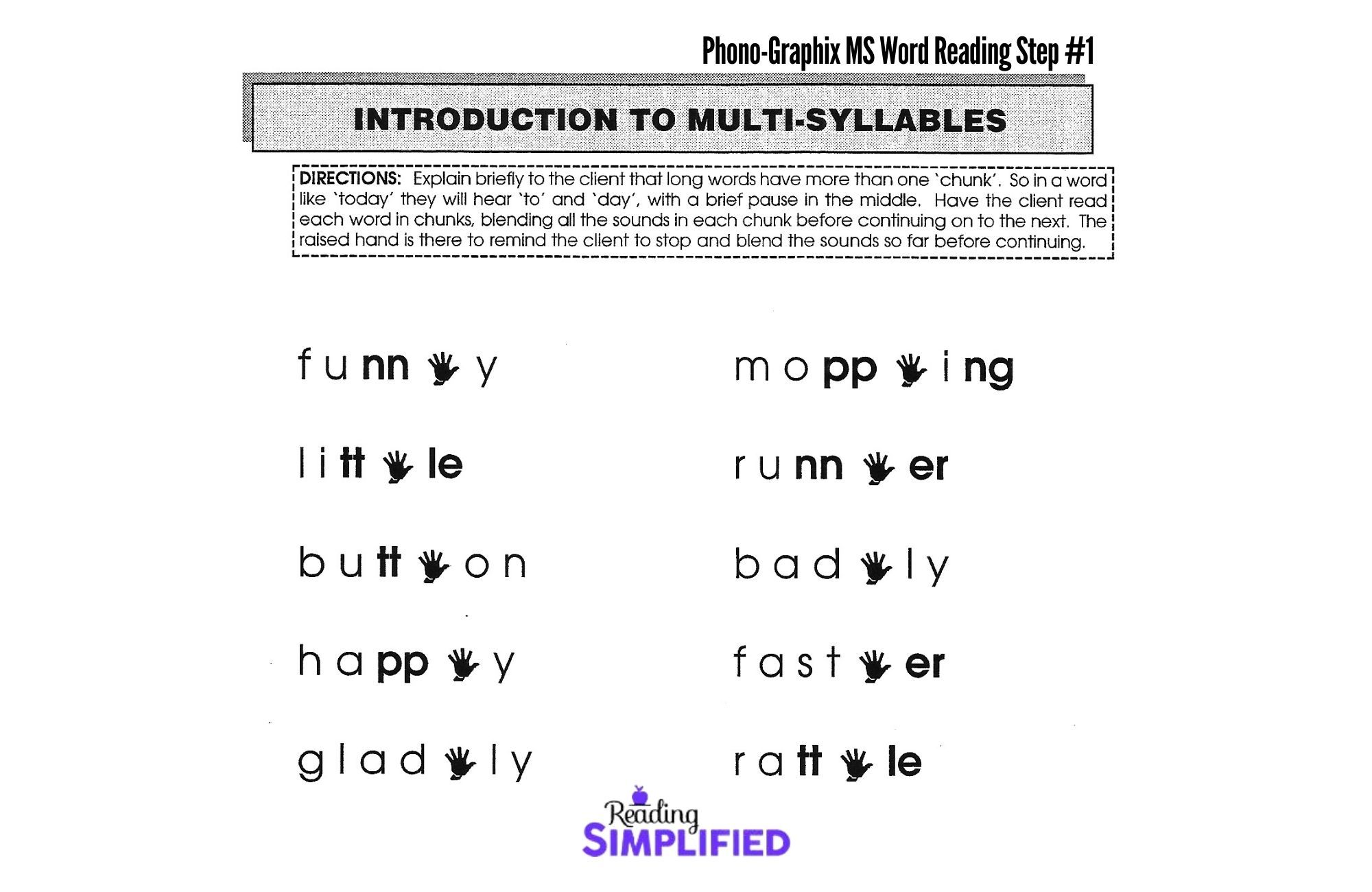
These initial separations help the reader begin to develop skill at attacking unknown MS Words. Scaffolds are faded as quickly as possible. Soon students are attempting to read regularly written MS words on their own. They might also write MS words by chunk, saying each chunk as they write them.
This transfer of skill from teacher scaffolding to the student internalizing how/where to chunk (without many rules or marking routines) works because people learn to read
- first by beginning with explicit instruction in our code
- yet then mostly through implicit observation of patterns they encounter while reading.
Researchers call this "statistical learning", which Mark Seidenberg has explained well in his book Language at the Speed of Sight. Some Structured Linguistic Literacy programs may rely entirely on the context of word study and related text readings for the student to pick up these patterns. Others may teach a few more spelling tendencies, yet usually, they rely on far fewer than their well-known synthetic phonics counterparts.
With just the one language task to focus on – processing the written symbols to produce a meaningful word – students can develop impressive skills in statistical learning of the code and how to chunk MS words. In addition, they are more likely to develop the cognitive flexibility needed to correct mispronunciations. For instance, if the child reads "lesson" as /less/ /oan/ instead of /less/ /un/, he must:
- realize it is not a word,
- determine which sound is likely incorrect,
- pull out the misidentified sound,
- replace it with a new sound,
- pronounce the word again, and
- determine if this correction was a success.
- If not, he must repeat the cycle.
Researchers call this skill of mispronunciation correction of an unfamiliar word reading, "Set for Variability." A growing body of research on Set for Variability suggests it is a second important decoding strategy after the strategy of blending sounds together. When we coach our students to "try another sound" as we tap the mispronounced grapheme (instead of considering which rule applies to the word or how to mark the word), they have more time and cognitive resources available to help practice and develop the essential cognitive flexibility needed for a lifetime of reading new words.
In sum, we have covered how the three principles of the Structured Linguistic Literacy methods –
- a language-first, sounds-first orientation,
- rapid exposure to our complex code, organized by sound, and
- cognitive flexibility enabled by depending on just one language task at a time – may explain how learning to read words, and even MS words can be feasible--and also in alignment with contemporary research. However, given space requirements, much has gone unsaid about how the Structured Linguistic Literacy methods work without rules and syllable-type instruction. My hope is that this review whets the appetite for further investigation!
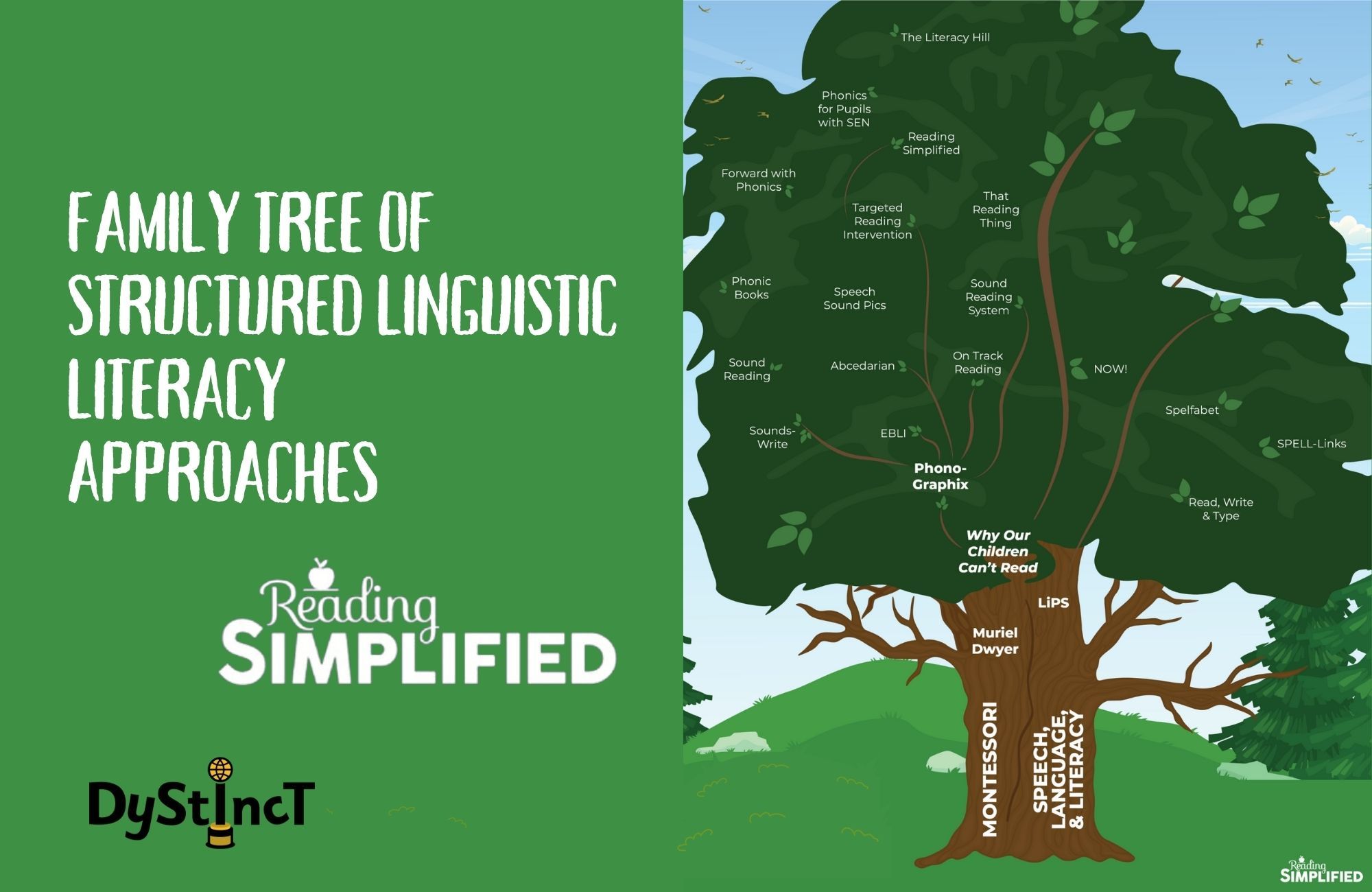
References
- Amendum, S. J., Vernon-Feagans, L., & Ginsberg, M. C. (2011). The effectiveness of a technologically facilitated classroom-based early reading intervention: The targeted reading intervention. The Elementary School Journal, 112(1), 107-131.
- Castles, A., Rastle, K., & Nation, K. (2018). Ending the reading wars: Reading acquisition from novice to expert. Psychological Science in the Public Interest, 19(1), 5-51.
- Denton, C. A., Fletcher, J. M., Anthony, J. L., & Francis, D. J. (2006). An evaluation of intensive intervention for students with persistent reading difficulties. Journal of Learning Disabilities, 39(5), 447-466.
- Elbro, C., de Jong, P. F., Houter, D., & Nielsen, A. M. (2012). From spelling pronunciation to lexical access: A second step in word decoding? Scientific Studies of Reading, 16(4), 341-359.
- McGuinness, D. (1997). Why Our Children Can't Read, and What We Can Do about it: A Scientific Revolution in Reading. Simon and Schuster.
- Moats, L. C. (1998). Teaching decoding. American Educator, 22(1), 42-49.
- Montessori, M. (2019). The Montessori Method: Scientific Pedagogy as Applied to Child Education in the Children's Houses' with Additions and Revisions by the Author. Good Press.
- Rayner, K., Foorman, B. R., Perfetti, C. A., Pesetsky, D., & Seidenberg, M. S. (2001). How psychological science informs the teaching of reading. Psychological Science in the Public Interest, 2(2), 31-74.
- Seidenberg, M. (2017). Language at the Speed of Sight: How We Read, Why So Many Can't, and What Can Be Done about It. Basic Books.
- Simos, P. G., Fletcher, J. M., Bergman, E., Breier, J. I., Foorman, B. R., Castillo, E. M., ... & Papanicolaou, A. C. (2002). Dyslexia-specific brain activation profile becomes normal following successful remedial training. Neurology, 58(8), 1203-1213.
- Stanovich, Keith. (1986). Matthew effects in reading: Some consequences of individual differences in the acquisition of literacy. Reading Research Quarterly. 21(4), 360-407.
Dr Marnie Ginsberg
Founder Reading Simplified
ReadingSimplified.com | Facebook | Instagram | Twitter | Pinterest | YouTube
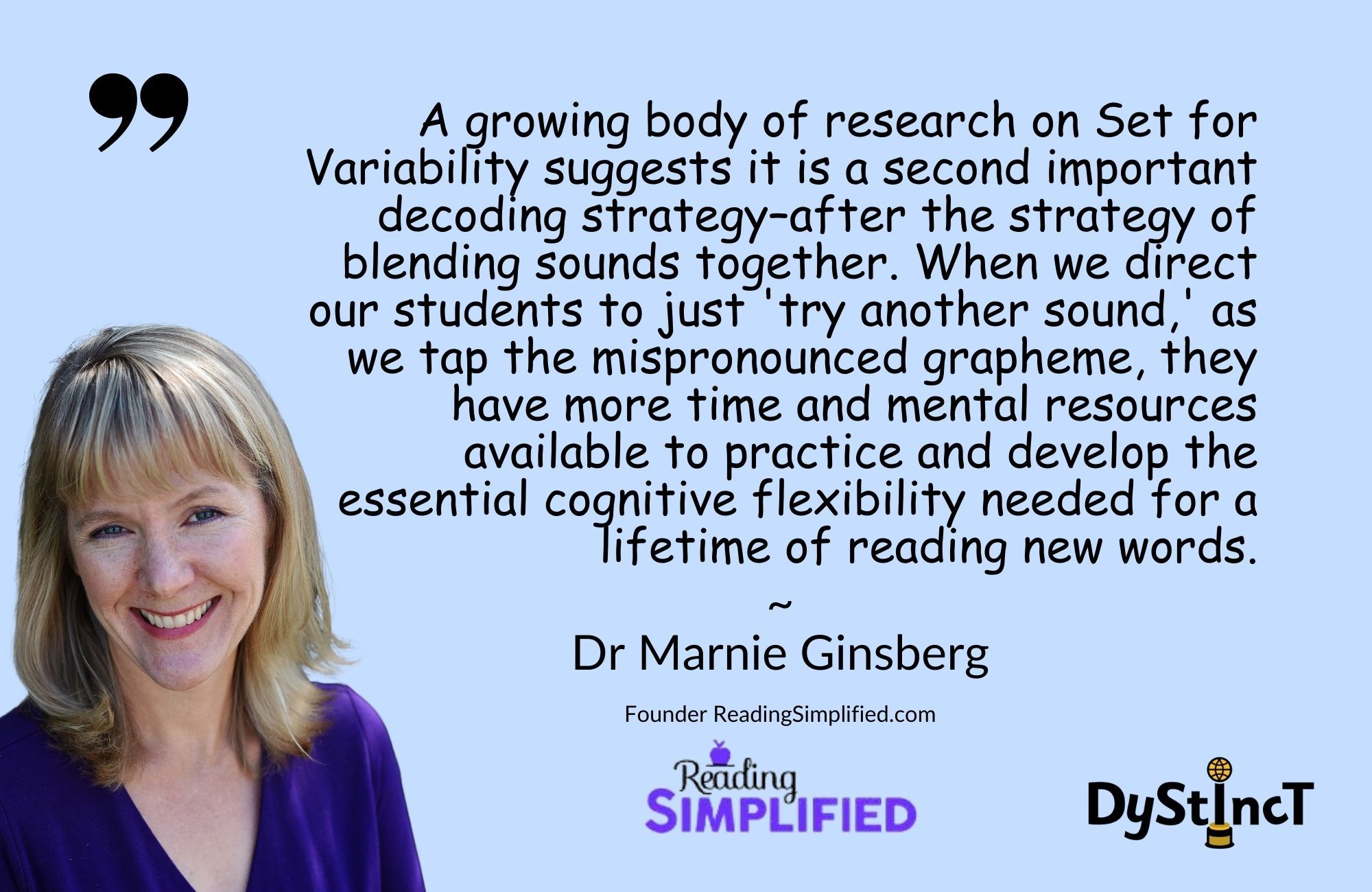
Dr Marnie Ginsberg, Founder of Reading Simplified, is a reading difficulties detective who streamlines the science and art of reading instruction so teachers can rapidly learn effective techniques that help students accelerate to grade level and beyond. She also helps translate the latest understandings from science into practical, easy-to-implement activities.
In the late 1990s, Marnie uncovered that her 6th-grade language arts students, on average, were reading two years below grade level. And despite her master's degree and enthusiasm, she had no idea how to remediate their word-reading difficulties.
After eventually finding solutions for her struggling readers, she led the development of the Targeted Reading Intervention at the University of North Carolina. Across 15+ years, multiple research articles have demonstrated that struggling K-2 readers grow significantly in reading with the Targeted Reading Intervention (TRI), which is on the federal What Works Clearinghouse and is endorsed by many organizations such as Evidence for ESSA and RAND Corporation's Promising Practices Network. Given the repeated, strong results of the TRI across multiple clinical trials, Dr Ginsberg expanded the resources and adapted the professional learning approach to provide Reading Simplified for a broader audience beginning in 2013.
Extracts from Dystinct Magazine


















